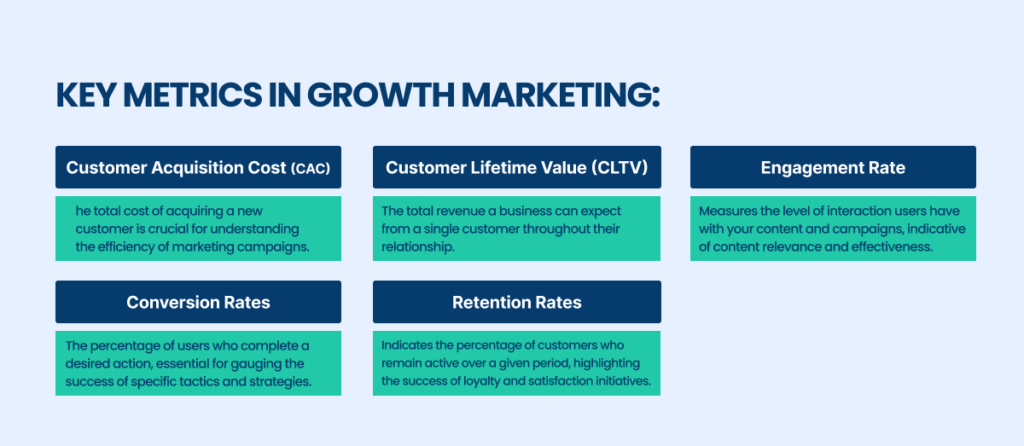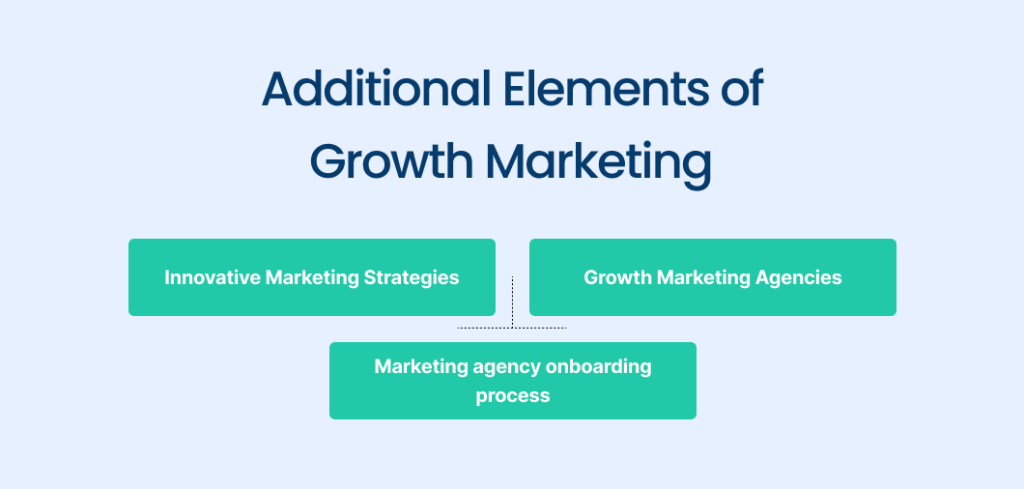Imagine a company as a garden.
Demand generation is like planting the seeds—it gets people interested in your product or service. But for a flourishing garden, you need more. That’s where growth marketing comes in.
In simpler terms, both are crucial for business success, but they serve different purposes.
So, how do you decide which one to focus on, or do you need both? Maybe you should ask for a growth marketing agency.
Indeed, growth marketing vs. demand generation battles the mind.
This topic explores the distinctions and synergies of growth marketing vs. demand generation, helping businesses decide which strategy suits their goals and industry.
Introduction to Growth Marketing vs. Demand Generation
When enhancing a business’s reach and revenue, the terms growth marketing vs. demand generation often come into play.
Source: Ahrefs
Although distinct, both approaches play crucial roles in a modern marketing strategy, influencing how companies attract, engage, and convert their target audiences.
What is Growth Marketing?
Growth marketing extends beyond traditional marketing by focusing on the entire funnel, leveraging data and innovative tactics to foster customer growth and retention.
It is a dynamic approach that continuously adapts and evolves based on real-time results and interactions, making it highly effective in today’s fast-paced market environments.
Core Strategies of Growth Marketing:
- Experimentation and Optimization: Constant testing across various channels and aspects of the marketing funnel to discover the most effective strategies.
- Cross-Channel Marketing: Utilizing multiple channels such as email, social media, and content marketing to reach customers at different stages of their journey.
- User Onboarding: Creating tailored experiences during the initial user interaction with a product or service to maximize ongoing engagement and satisfaction.
- Personalization: Leveraging data to customize messaging and offers to the needs and behaviors of individual customers.
- Retention Techniques: Implementing strategies to keep customers engaged and loyal, such as loyalty programs, regular updates, and feedback loops.
Key Metrics in Growth Marketing:

When evaluating “growth marketing vs. demand generation,” it’s important to understand that while both target revenue growth, their approaches and focus areas differ significantly.
Growth marketing is an all-encompassing approach aimed at acquiring customers and actively retaining them through continual engagement and optimization.
What is Demand Generation?
Conversely, demand generation is a focused marketing approach that aims to drive awareness and interest in a company’s products or services.
It is often the first step in a long-term marketing strategy, setting the stage for deeper customer relationships through lead generation and nurturing strategies.
Key Components of Demand Generation:
- Content Marketing: Crafting valuable content that addresses potential customer’s pain points and industry questions to attract and engage a target audience.
- Targeted Campaigns: Using detailed customer data to design marketing campaigns that resonate with specific audience segments.
- Lead Nurturing: Developing ongoing communications to move leads through the sales funnel, from initial awareness to the decision-making stage.
- Performance Measurement: Analyzing the effectiveness of demand generation efforts in terms of lead quantity, quality, and the progression of leads through the sales funnel.
Demand generation is essential for creating a steady pipeline of leads and is typically characterized by its emphasis on the early stages of customer acquisition.
Comparing Growth Marketing vs. Demand Generation
In the “growth marketing vs. demand generation” comparison, the key distinction lies in their respective scopes and objectives:
- Scope of Focus: Growth marketing focuses on the entire customer lifecycle, while demand generation concentrates more on the top of the funnel.
- Primary Objective: The main goal of growth marketing is to grow and retain a sustainable customer base, whereas demand generation aims to create interest and educate potential customers.
Integrating AI in Marketing
- AI Marketing (AI ROI): Both strategies benefit significantly from AI technologies, which can predict customer behaviors, personalize campaigns, and optimize marketing efforts for better ROI.
- Paid vs. Organic: Understanding the balance and integration of paid advertising and organic efforts is crucial in both strategies to maximize visibility and conversion.
Objectives of Growth Marketing
Growth marketing, an evolved form of traditional marketing, is designed to attract customers and engage and retain them through innovative marketing strategies.
This comprehensive approach contrasts with the more focused objective of demand generation, which primarily aims to create initial interest and awareness. Here are the primary objectives of growth marketing:
- Acquire Customers Across Multiple Channels: Unlike traditional methods, which focus on single-channel engagements, growth marketing strategies utilize a variety of channels, including social media marketing, digital marketing, and search engine optimization.
This approach ensures a broader reach and engages potential customers where they are most active. - Increase Customer Lifetime Value (CLTV): Growth marketing aims to maximize the value each customer brings to the business over the entire relationship duration.
This involves not just making a sale but continually providing value through upselling, cross-selling, and enhancing customer experience, ensuring customers remain connected to the brand for longer periods. - Enhance Customer Retention: One core objective of growth marketing is to keep the churn rate as low as possible.
To keep the existing customer base active and interested, strategies such as personalized email marketing campaigns, loyalty programs, and regular engagement through social media are employed. - Optimize Marketing Efforts through Experimentation: An experimentation roadmap is crucial in growth marketing. This approach involves continuously testing and optimizing strategies to see what works best.
Growth marketing adapts and evolves through A/B testing, data analytics, and user feedback, ensuring that the marketing efforts are as effective as possible. - Drive Sustainable Growth: Unlike demand generation, which often focuses on short-term goals, growth marketing is about sustainable growth. It integrates strategies that initiate rapid growth spurts and ensure stability and scalability over time.
This might involve refining marketing strategies based on ongoing market research and emerging trends. - Utilize Advanced Technologies: Growth marketing often leverages cutting-edge technologies, including AI and machine learning, for predictive analytics, automation of repetitive tasks, and more personalized customer experiences.
This technological integration helps fine-tune marketing strategies to deliver better results and higher returns on investment.
Additional elements involved in growth marketing:

- Innovative marketing strategies: Growth marketers are often at the forefront of adopting innovative strategies that disrupt traditional marketing norms. This includes utilizing new platforms, experimenting with new media types, and engaging with customers in novel and unexpected ways.
- Growth Marketing Agencies: These agencies provide end-to-end services covering everything from strategy formulation to execution and monitoring. They are adept at navigating the complexities of various industries and can provide tailored solutions that drive growth.
- Marketing agency onboarding process: A well-structured onboarding process by a marketing agency is vital in aligning the marketing strategies with the client’s business objectives. This phase is crucial for understanding the business’s market position, customer demographics, and ultimate growth goals.
Growth marketing is about thinking beyond the initial click or customer acquisition. It’s about fostering a deeper customer relationship through continuous engagement and innovation.
By comparing “growth marketing vs. demand generation,” businesses can identify which strategies best align with their long-term goals and market dynamics, crafting a marketing approach that is reactive, proactive, and forward-thinking.
Objectives of Demand Generation
Demand generation is a strategic marketing mix component designed to build and nurture key prospects and customers through the sales funnel. It is vital in generating awareness and demand for a company’s products or services.
Source: Dataaxleusa
While it shares some common goals with growth marketing, demand generation focuses more specifically on generating initial interest and guiding potential customers toward engagement and conversion. Here’s an exploration of the core objectives of demand generation:
- Increase Brand Awareness: One of the primary goals of demand generation is to increase a brand’s visibility among its target audience.
This is often achieved through digital marketing campaigns, event marketing, and influencer marketing. By leveraging these tactics, businesses aim to introduce their brand to a broader audience and establish a significant presence in their respective markets.
- Generate and Nurture Leads: Demand generation is about attracting and nurturing leads through the sales funnel. This involves educating potential customers about the product or service through informative content, engaging marketing campaigns, and targeted communications.
The process ensures that leads are warm and qualified by the time they reach the sales team, significantly increasing the likelihood of conversion.
- Drive Conversions and Sales: The ultimate objective of any demand generation strategy is to drive conversions and increase sales. This involves using targeted demand-generation tactics that align with potential customers’ needs and behaviors.
By optimizing the marketing campaign at each step of the funnel, demand generation helps convert awareness into action, turning interested prospects into paying customers.
- Align Marketing and Sales Efforts: Effective demand generation requires a strong alignment between marketing and sales teams. This synergy ensures that both teams work towards the same goals with a unified strategy.
Marketing teams generate and nurture leads, while sales teams focus on converting those leads into customers. Regular feedback and communication between these teams are crucial for refining strategies and achieving better outcomes.
- Establish Thought Leadership and Credibility: Beyond just selling a product or service, demand generation strategies often aim to establish a brand as a thought leader in its industry.
This is achieved through content marketing efforts such as whitepapers, blogs, webinars, and case studies highlighting the company’s expertise and insights. Businesses can build credibility and trust with potential customers by educating the market and providing valuable content.
- Utilize Metrics for Strategy Optimization: Demand generation heavily relies on metrics and data to measure the effectiveness of marketing efforts and make informed decisions. Key performance indicators such as lead acquisition rates, conversion rates, and ROI are monitored to assess the success of different tactics and strategies.
This data-driven approach allows marketers to fine-tune their efforts for better efficiency and results.
- Enhance Customer Engagement: With the use of advanced digital tools and platforms, demand generation aims to enhance engagement with potential customers.
Techniques like personalized email marketing, interactive web content, and social media engagement play significant roles in keeping the audience interested and involved with the brand.
- Exploit New Markets and Opportunities: Demand generation is also about exploring new markets and capitalizing on emerging opportunities.
By keeping a pulse on industry trends and customer needs, businesses can adapt their strategies to tap into new segments and expand their reach.
Here are some additional components involved in demand generation:
- Questions to Ask Growth Agency: When collaborating with a growth marketing agency, it is crucial to understand their approach to demand generation. Questions could include how they plan to increase brand awareness, their methods for lead nurturing, and the specific metrics they use to measure success.
- Event Marketing: Hosting or participating in events can be a powerful demand-generation tactic. Events increase visibility and provide a platform for direct interaction with potential customers, which can lead to immediate and measurable impacts on lead generation efforts.
Source: Dataaxleusa
Demand generation is integral to building a foundation of interested prospects and nurturing them toward a purchase decision.
By comparing “growth marketing vs. demand generation,” businesses can clearly delineate their immediate sales goals from long-term growth strategies, ensuring that each marketing effort is optimized for its specific objectives and contributes effectively to the overarching business goals.
Strategic Approaches and Tactics in Growth Marketing
In growth marketing, strategic approaches and tactics are designed to optimize and scale business growth effectively, distinguishing it from traditional demand-generation strategies.
Growth marketing strategies involve various innovative tools and techniques that enable businesses to attract and retain new users, ultimately fostering brand loyalty. This deep focus on continuous improvement through tactics such as A/B testing and leveraging user engagement platforms forms the backbone of an effective growth marketing strategy.
A/B Testing As a Part of Marketing Strategy
A/B testing, or split testing, is a fundamental technique in growth marketing that involves comparing two versions of a web page, email, or other marketing asset to determine which one performs better in engaging customers and driving conversions.
This method allows marketers to make data-driven decisions about changes to their marketing strategies, ensuring that every campaign element is optimized for maximum impact.
For instance, an A/B test could compare different headlines, call-to-action buttons, images, or even entire landing pages to see which version leads to higher conversion rates or better engagement metrics. This approach enhances the effectiveness of the marketing efforts and minimizes risks by allowing marketers to test changes before fully implementing them across all platforms.
User Engagement Platforms
User engagement platforms are critical tools in the arsenal of growth marketing. These platforms provide services that help marketers engage with users in a personalized and meaningful way across various stages of the customer journey.
Features like push notifications, in-app messages, personalized emails, and more enhance user experience and maintain ongoing customer dialogue. The goal is to increase user retention and encourage active interaction with the brand, which is crucial for building long-term relationships and enhancing brand loyalty.
Such platforms are particularly effective in streamlining communication and facilitating complex campaigns that require coordination across multiple channels. They allow for the automation of repetitive tasks while also delivering tailored messages that resonate with individual user preferences and behaviors.
This high level of personalization is vital in today’s marketing landscape, where consumers often ignore or overlook generic messages. Businesses can significantly boost engagement rates by leveraging user data to deliver relevant content at the right time through the right channels.
Integration with Traditional and Innovative Marketing Channels:
While digital tools dominate the growth marketing landscape, integrating them with traditional channels such as print marketing can create a cohesive and broad-reaching marketing strategy.
Source: Data report
For instance, QR codes in print advertisements can link to digital campaigns, creating a seamless connection between the offline and online worlds. This integration ensures that all marketing channels are leveraged to their fullest potential, enhancing the overall effectiveness of the marketing strategy.
Tools and Techniques in Demand Generation
Demand generation encompasses strategies and tools to drive awareness and interest in a company’s offerings. Lead nurturing and content marketing are two of the most effective techniques within this framework.
These components are crucial for guiding potential customers from initial awareness to the decision-making stage and eventually converting them into loyal customers.
Lead Nurturing
Lead nurturing is a systematic process that develops relationships with potential customers at every sales funnel stage.
It involves communicating consistently and meaningfully with leads to ensure they progress from initial interest to a final purchase decision.
- Email Automation: Automated email campaigns are fundamental in the lead nurturing. They allow marketers to send targeted messages based on each lead’s behavior, preferences, and stage of the buyer’s journey.
This personalized approach ensures potential customers receive relevant and timely content that can move them closer to purchasing. - CRM Systems: Customer Relationship Management (CRM) systems are vital for managing lead information and interactions.
They track the history of communications and provide insights into prospects’ specific needs and behaviors, which can be used to tailor future interactions. - Segmentation and Personalization: Segmenting leads into different categories based on their characteristics and behaviors, which allows for more targeted and effective nurturing efforts.
Personalized messages cater to each segment’s specific needs and interests, increasing the likelihood of engagement and conversion. - Lead Scoring: This technique involves assigning a value to each lead based on its engagement level and likelihood of conversion.
Lead scoring helps prioritize lead nurturing efforts towards those more likely to become customers, optimizing the use of resources. - Multi-channel Nurturing: Beyond email, effective lead nurturing involves multiple channels such as social media, webinars, and direct mail. This ensures that the communication is consistent across all platforms and touches the leads at various points in their decision-making process.
Content Marketing
Content marketing is a strategic marketing approach focused on creating and distributing valuable, relevant, and consistent content to attract and retain a clearly defined audience — and, ultimately, to drive profitable customer action.
Source: Forbes
- Educational Content: Producing high-quality, educational content that addresses the pain points and questions of the target audience establishes a brand as a thought leader and builds trust. This can include blog posts, whitepapers, ebooks, and how-to guides.
- SEO-Optimized Content: Ensuring content is optimized for search engines increases visibility and attracts more organic traffic to the website. Using targeted keywords, maintaining a regular publishing schedule, and creating valuable content are all part of an effective SEO strategy.
- Interactive Content: Tools like quizzes, polls, and interactive infographics engage users more deeply than passive content. They educate and entertain, which can help capture leads’ contact information and preferences.
- Video Content: Videos are a powerful tool in content marketing, conveying complex information in an engaging and digestible format. They are particularly effective for demonstrating products or services and providing testimonials, which can help nurture leads.
- Social Media Content: Utilizing social media platforms to share and promote content allows brands to reach a broader audience. Engaging with followers through regular posts, comments, and shares builds community and encourages interaction.
By integrating these tools and techniques, demand generation can effectively guide potential customers through the marketing funnel. From nurturing leads with personalized, multi-channel strategies to engaging them through diverse, high-quality content, these practices are essential for converting interest into tangible business outcomes.
Lead nurturing and content marketing synergy ensure that every prospect receives the attention they need at the right time, significantly boosting the chances of conversion and driving business growth.
Partner with [A] Growth Agency
Marketing can be like a complex recipe with many ingredients, and getting the measurements right can be tricky.
[A] Growth Agency can be the game-changer.
With a team composed of highly experienced growth marketers, we will excel in a comprehensive range of marketing methodologies, from traditional tactics to the latest digital innovations.
Our approach is the commitment to data-driven strategies. This method ensures that every campaign is grounded in solid analytics, allowing for informed decision-making that enhances effectiveness and ROI.
While marketing can be complex, a good marketing partner can be your secret ingredient for success!

